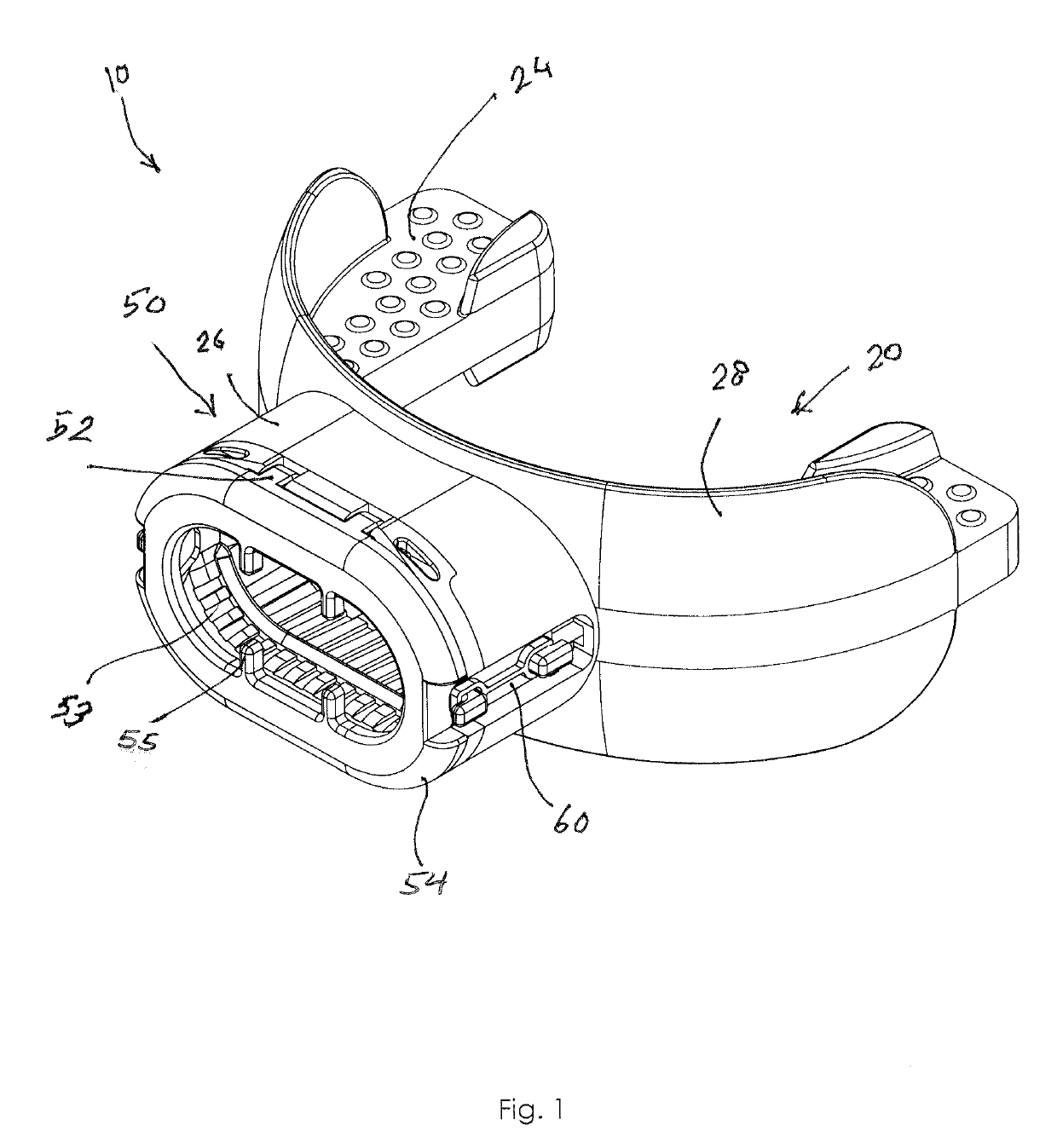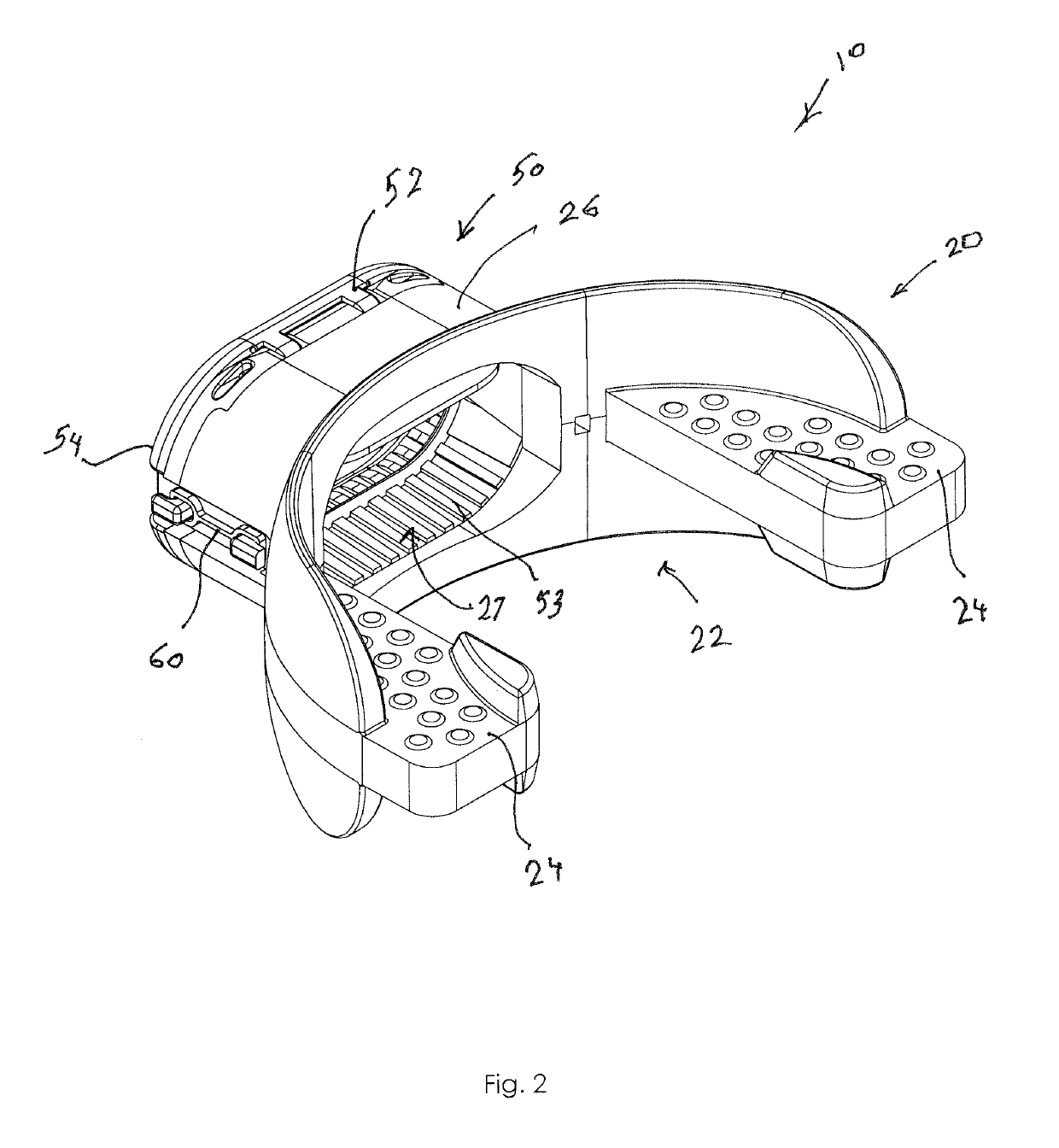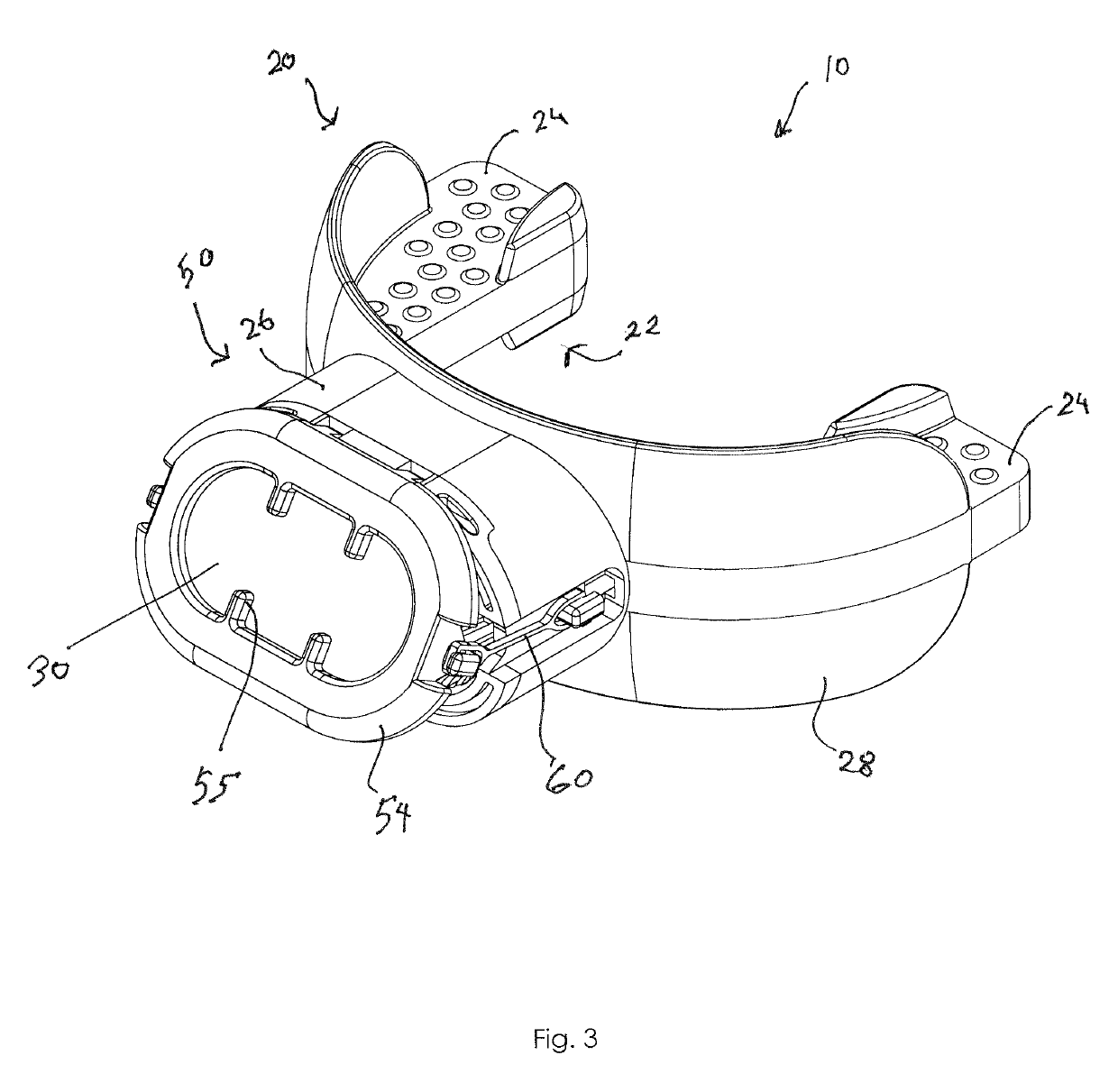Bi-Directional Oxygenation Apparatus for a Non-Intubated Patient
a non-intubated patient and oxygenation technology, applied in the field of medical equipment, can solve the problems of undesirable intubation, dangerously distressed patients, and inability to inhale or exhale on his own, and achieve the effects of increasing oxygen, increasing the amount of oxygen, and reducing the airflow of exhalation
- Summary
- Abstract
- Description
- Claims
- Application Information
AI Technical Summary
Benefits of technology
Problems solved by technology
Method used
Image
Examples
Embodiment Construction
[0037]A bi-directional oxygenation apparatus for a patient according to a preferred embodiment will now be described with reference to FIGS. 1 to 23 of the accompanying drawings. The bi-directional oxygenation apparatus 10 includes a mouthpiece 20 having an external portion 26, a resistance member 30 for regulating inhalation and exhalation resistance, and a vent member 50. As will be described in greater detail later, the vent member 50 may also be referred to as a vent port through which ambient air is inhaled into the device and inhaled air is exhaled. It will be understood that references to a “patient” herein also contemplates users not under the care of any doctor and, therefore, not a typical ‘patient,” such as an athlete using the oxygenation apparatus 10 while practicing or while engaged in game play.
[0038]It is understood that references herein to a patient refer to a patient who is not intubated or being treated on a complete respiratory system that essentially inhales an...
PUM
 Login to View More
Login to View More Abstract
Description
Claims
Application Information
 Login to View More
Login to View More - R&D
- Intellectual Property
- Life Sciences
- Materials
- Tech Scout
- Unparalleled Data Quality
- Higher Quality Content
- 60% Fewer Hallucinations
Browse by: Latest US Patents, China's latest patents, Technical Efficacy Thesaurus, Application Domain, Technology Topic, Popular Technical Reports.
© 2025 PatSnap. All rights reserved.Legal|Privacy policy|Modern Slavery Act Transparency Statement|Sitemap|About US| Contact US: help@patsnap.com



